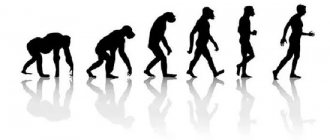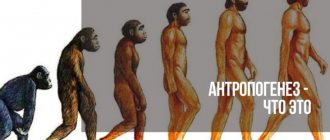Human development is a continuous process starting from birth to death. At every moment of life, every person is in a state of personal evolution. Physical changes drive much of the process as our cognitive abilities develop and decline in response to brain growth in childhood and decline in function in old age. Psychosocial development also depends significantly on physical development, as our changing bodies and brains, together with our environment, shape our identity and our relationships with others.
Physical development
Although different scientists define physical development in slightly different ways, most generally break the process down into eight stages, which include:
- Infancy;
- Early childhood;
- Middle childhood;
- Late childhood;
- Adolescence;
- Early adulthood;
- Average age;
- Old age.
In recent years, as people have lived longer, some have added "late aging" to the list. At each stage, certain physical changes occur that affect a person's cognitive and psychosocial development.
Grandfather with granddaughter
Cognitive development
Cognitive development refers to the acquisition of the ability to reason and solve problems. The main theory of cognitive development was developed by Jean Piaget, a Swiss developmental psychologist. Piaget divided children's cognitive development into four stages, from birth through adolescence. A child who successfully progresses through the stages moves from simple sensorimotor responses to the ability to categorize and create a series of objects and eventually engage in hypothetical and deductive reasoning, according to the "new dictionary of scientific biography."
Prenatal period of development
In the prenatal, or intrauterine, period of ontogenesis, in turn, the germinal (embryonic) and fetal periods are distinguished. The first period lasts 2 months, the second - from the 3rd to the 9th. During the embryonic period, cellular material accumulates, which gradually differentiates into the rudiments of all types of tissues. During the 2nd month of intrauterine development, organs are formed and the main parts of the body are formed - the head, torso and limbs. At the 5th week of development, the heart begins to beat. From the 3rd month, intensive growth occurs in all departments and parts of the fetal body, which continues after the birth of the child.
Psychosocial development
The primary theory of psychosocial development was created by Erik Erikson, a German developmental psychologist. Erikson divided the process of psychological and social development into eight stages that correspond to the stages of physical development. At each stage, according to Erickson, the person faces a psychological conflict that must be resolved in order to progress. Moving from infancy to old age, these conflicts are trust versus mistrust, autonomy versus shame and doubt, initiative versus guilt, industry versus inferiority, identity versus role diffusion, proximity to isolation, fertility.
Interdependent processes
Development is the product of a complex interaction of biological, psychological and social influences. As children develop physically, gaining greater psychomotor control and increasing brain function, their cognitive processes become more complex, meaning they become more adept at thinking and influencing their environment. These physical and cognitive changes, in turn, enable them to develop psychosocially, developing an individual identity and interacting effectively and efficiently with others. Thus, as described, human development is a lifelong process of growth, maturation and change.
Features of the growth process of the human body
Period of childhood and adolescence During the process of growth, the basic proportions of the body change. Thus, in a newborn child, the length of the head is 4 times less than the length of the body, and in children 5–7 years old - 6 times. By the age of 16–20, the ratio of head to body length is 1:8. In parallel with the growth of the body, age-related changes occur in all organs and systems of the body. During adolescence, the genitals rapidly enlarge and secondary sexual characteristics develop. In girls, the amount of hair in the armpits and pubic area increases, the mammary glands enlarge, the shape of the pelvis changes, and menstruation appears. By the age of 15–16, boys begin to grow hair on their face and body.
In adolescence (16–20 years for girls and 17–21 years for boys), the growth of the body is basically completed and a relatively stable period of existence begins - adulthood.
The period of adulthood The structure of the body in adulthood changes little. There are 2 periods of adulthood: the first - up to 35 years, the second - from 36 to 55 years in women and up to 60 years in men. Mature age is the period of greatest human potential; it is in the second period of adulthood that a person reaches the peaks of his personal and professional activities.
Period of old age After 60 years, the body begins to gradually age, and structural changes occur in a number of organs. This, in turn, causes a decrease in the functional abilities of the body. In old age (from 61 to 74 years in men and from 56 to 74 years in women) and senile age (75–90 years), a characteristic restructuring occurs in the body, which is studied by gerontology (from the Greek geron - old man).
The time limits for aging vary widely among individuals, but aging is a genetically determined process. Scientists emphasize that an active lifestyle and regular physical exercise slow down the aging process, but only within the limits determined by hereditary factors.
Consequences
The importance of physical, cognitive and psychosocial development becomes apparent when a person fails to successfully meet one or more developmental milestones. For example, a child who fails to achieve physical developmental milestones may be diagnosed with developmental delay. Likewise, a child with a learning disability may not be able to cope with the complex cognitive processes of a typical adolescent. A middle-aged adult who fails to successfully resolve Erikson's stage of fertility versus stagnation may experience "profound personal stagnation, masked by a variety of escapisms such as alcohol and drug abuse and sexual and other problems." Thus, it is important for all people as they navigate the developmental challenges they face at every age.
Human development
What influences human development
Genetic, environmental and psychological factors and disease can influence both a child's cognitive development and physical growth. That's why parents, doctors, and teachers must regularly assess children's developmental patterns over many years to ensure children reach certain developmental milestones.
Genetic factors
Biology plays an important role in the healthy development of a child. Genes are a biological risk factor that cannot be changed. However, although a child's genetic background may predispose her to certain inherited diseases and disorders, early interventions can improve the outcome that these risk factors may have on the child's physical and cognitive growth and development. This is especially important when dealing with genetic conditions that cannot be prevented.
Environmental influence
There are other biological risk factors that can affect a child's development and growth, directly or indirectly. Tobacco, alcohol, malnutrition, medications, recreational drugs or other chemicals can affect fetal growth. Not only can these substances cause birth defects, but they can also affect a person's cognitive development in later stages of development. Unfortunately, the effects of these risk factors on a child's learning and behavior may not be apparent for many years.
Disease
Acute and chronic illness often pose an increased risk of developing additional health problems along with emotional and behavioral problems. Physical disabilities can also lead to social isolation, which can have a significant impact on a child's education and, in turn, affect a person's ability to secure employment in adulthood. Along with the physical and cognitive limitations that a child may face due to the disease, these impairments can interfere with the child's ability to communicate and interact socially with their peers. This can ultimately lead to the child becoming socially stigmatized, which can have further negative effects on the individual's physical health.
Baby care
Researchers measure children's physical, social, emotional and behavioral development at frequent intervals to predict the impact of maternal and non-maternal care on a child's cognitive development. The study results support the idea that the quality of care provided is a strong predictor of a child's cognitive abilities and social competence. Maternal care appears to be the strongest predictor of success.
Psychological factors
Parenting style is another factor that influences a person's cognitive development. Parental values and beliefs influence how a child understands what is happening around him. While some parenting styles may be unresponsive to the child's needs and require conformity, others encourage academic achievement, self-confidence, independence and maturity.
Social influences
Social relationships play another important role in a child's cognitive development. Social cognition is seen as key to the learning process because learning requires the child to be able to interact effectively with others. Play is one of the first social interactions that contributes to a child's ability to learn. Later, when the child participates in various social activities with other children, he learns to solve problems. Cultural influences also influence a child's cognitive development, with one of the most persistent cultural influences being the school system.
Lack of stimulation
Cognitive development, defined as the development of intelligence, conscious thought, and problem-solving ability, begins in infancy and continues into adulthood. Genetically, babies are born with a specific cognitive structure, but it is the sights and sounds of experience that help them reach their specific genetic potential. Brain growth occurs when the senses are stimulated. From birth to age eight, young brains are particularly focused on learning and making connections. A learning environment filled with love, warmth or stress and conflict also affects cognitive development.
Plastic
The baby's brain is born with many tools at its disposal, but very little information. He is able to cry, eat, sleep and remain alert. Although he is tiny, he encounters a world of knowledge that must be gained through experience. This power of flexibility, called “plasticity” by neurologists, gives every child the gift of possibility. Plasticity can be a blessing, a curse, or somewhere in between, depending on the child's circumstances. Given a life filled with enriching experiences that stimulate all the senses, a child has the ability to realize his or her full potential. Living without the necessary stimulation to stimulate neuronal growth can stunt a person's cognitive development.
Experience
Cognitive development depends on stimulation provided through the senses. When any of the five senses—touch, sight, sound, taste or smell—is activated, electrical activity occurs in the brain. Each sensory experience excites neural circuits, thereby creating stronger connections. Learning occurs when neural circuits are strengthened through repetition. Over time, other neural circuits become inactive due to lack of use. These inactive circuits are often eliminated in a process called "pruning." Pruning simplifies neural processing, allowing stronger circuits to operate more efficiently. Through pruning, children can practice walking, talking and other skills.
Relationship
Perhaps the most important and often overlooked aspect of cognitive development is the quality of human relationships. From infancy, the child learns to obtain what he needs through acts of communication. The speed and quality of the human response refines the connection. Loving touch, prompt response, and positive verbal feedback excite rudimentary neural pathways. The act of describing your actions, explaining details of the world and taking the time to show, experience, feel, smell and listen to what is around you provides your child with a wealth of information. These early forms of communication create the healthy social bonds and scaffolding needed to support verbal acquisition and emotional control, both of which are key in cognitive development.
Abuse and neglect
A childhood deprived of sensory stimulation does little to help the brain function. Abuse and excessive stress cause similar deficits, placing such a demand on survival that little time or energy is devoted to intellectual development. Long-term effects of abuse and neglect include decreased brain function, anxiety and panic disorders, as well as attention and memory dysfunction.
Children's development stages
Human development is the process of becoming mature, both physically and emotionally. This process takes many years and a person goes through many stages of growth to reach adulthood, the final stage of development. Humans are complex creatures, and each stage of growth involves physical, social, emotional, and cognitive development.
Baby
Infancy is the age of up to 1 year. Babies are completely dependent on another person, often the mother, to care for them. They cannot walk or talk and need help eating. During this first year of life, significant developmental changes occur.
There are four main categories of infant development.
- Social development occurs when a child begins to recognize and interact with other people.
- Although babies cannot speak, they begin to develop their language skills as they begin to understand and express their thoughts.
- Babies make huge strides in the gross motor learning skills of holding their head and sitting, crawling and pulling themselves up.
- Small motor skills develop, including reaching and grasping objects.
Baby starting to walk
Infants become toddlers between the ages of 1 and 2.5 years. Toddler is an appropriate name since at this stage of development they begin to walk but are unsteady on their feet. Toddlers learn many new skills, including walking, talking, problem solving and social skills. One of the most important milestones a baby strives for is gaining independence. This stage is often frustrating for parents.
Preschooler
At the preschool stage of development, children are 4 and 5 years old. During this stage of growth, the focus is on learning and school preparation. This involves broadening their focus and practicing discipline.
School age
Children between the ages of 5 and 13 enter the school age developmental stage. This great age covers a wide range of skills and abilities. The years of puberty or a person's sexual development begin in the later years of this stage.
Teenagers
This final stage to adulthood includes children between the ages of 13 and 18. This makes this stage especially difficult for both parent and child, especially as teenagers begin to make their own decisions. Although teenagers begin to become detached from authority figures such as parents and teachers, this proves a necessary step in their growth as they embark on the adventures of early adulthood.
Coming of age
In our society, adulthood begins at age 18 and continues until death. Although fewer specific physical developmental milestones occur during this stage, adults continue to learn and grow emotionally and mentally throughout their lives.
Periodization of personality development
E. Erikson identified 8 stages of personality development: infancy (oral-sensory), early childhood (muscular-anal), childhood (locomotor-genital), school age, adolescence and youth, early adulthood, middle age, late adulthood.
Infancy (oral-sensory stage) 0 – 1 year.
At this stage, the child develops trust or distrust in the world. With progressive development, a trusting attitude is manifested in easy feeding, normal deep sleep, and relaxed internal organs. The baby trusts everyone around him without anger or anxiety, and is calm about his mother's absence, feeling that all his needs will be met. During this period, he receives care, attention, and familiarity with the outside world from his mother. Maternal love and tenderness determines the level of faith and hope derived from the first life experience. At this time, he absorbs the image of his mother (the mechanism of introjection arises). The identity of the developing personality begins to form.
Early childhood (muscular-anal stage) 1 – 3 years
During this period, the baby’s capabilities expand: he begins to walk and assert his independence. Parents should help maintain the child's sense of independence. Parents' restrictions on the child's demands must be reasonable, because they create the basis for negative feelings of doubt and shame. If parents are overly harsh, the child develops a fear of “losing face,” constant anxiety, stiffness, and unsociability.
Childhood (locomotor-genital stage) 3 – 6 years
This period coincides with preschool age: the child actively explores the world around him, quickly learns everything, acquiring new tasks and responsibilities, and models adult relationships in play. Gender identification occurs, the child masters male and female behavior patterns. He becomes more independent, initiative is formed. If his behavior becomes aggressive, initiative is limited to adults, and feelings of guilt and anxiety appear. Consequently, new internal authorities are established - conscience and moral responsibility for one’s thoughts, desires and actions. Parents should not put excessive pressure on the child’s conscience and punish, because this will cause constant fear of punishment, vindictiveness, initiative will be inhibited, and passivity will develop.
School age (latent stage) 6 – 12 years
This period is prepubertal (before the child reaches puberty). This stage is associated with the cultivation of hard work and the acquisition of new knowledge and skills, the basics of labor and social experience are comprehended, the possibility of recognition by others and the acquisition of a sense of competence arises. If successes are small, the child acutely perceives his ineptitude or inability, and feels insecure among his peers. Instead of a feeling of competence, a feeling of inferiority is formed. This period is a kind of beginning of professional identification, a sense of connection with representatives of certain professions.
Adolescence and youth (12 – 20 years)
Adolescence and adolescence are a period of deep crisis. Childhood is over, identity begins to form. It combines all previous identifications of the child, new ones are added to them, because growing up begins, appearance changes, inclusion in new social groups occurs, new ideas about oneself are acquired. Holistic personal identity, independence, initiative and competence allow young people to solve the problem of self-determination and choice of life path. If you fail to understand yourself and your place in society, there is a diffusion of identity. An infantile desire not to enter adulthood, a persistent state of anxiety, a feeling of isolation and emptiness appears.
Early maturity (20 – 25 years)
In early adulthood, a person faces the problem of intimacy (closeness), true sexuality appears. A person is ready for intimacy with another both sexually and socially. After searching for his own identity, he is ready to merge with the identity of the one he loves. Close relationships require loyalty, moral strength and self-sacrifice. But this desire should not be drowned out by the fear of losing one’s own “I”. This is the time to start a family. It brings love, understood by E. Erikson in a romantic, erotic and moral sense. In marriage, love is manifested in care, respect, and responsibility for a life partner. If a person is not able to love and establish close relationships with other people, then this leads to isolation and loneliness.
Average age (25 – 65 years)
This is the period of maturity, it is the longest. The main thing is “a person’s attitude towards the products of his labor and his offspring”, concern for the future of humanity. The desire to be productive and creative, to pass on your experience and ideas to the next generation. The desire to contribute to the lives of future generations is realized in relationships with your children. Erikson emphasized the dependence of the older generation in the family on the younger one, because a mature person needs to be needed. If this opportunity is not available, indifference and self-focus appear.
Late adulthood (after 65 years)
The last stage is integrative: “the fruits of the seven previous stages ripen.” A person takes the path of life he has passed for granted and gains personal integrity. Wisdom appears, a look into the past makes it possible to say: “I am satisfied.” Children are perceived as an extension of themselves, the fear of death disappears. If a person is dissatisfied with his life lived, considers it a series of mistakes, irritation and despair appear from approaching the end.
Difference between human growth and development
Human growth is based on biological events that cause you to grow physically, which naturally occurs in the early stages of your life. Development, however, is the result of psychological and social growth, emphasized by environmental and individual behavioral factors, sometimes more simply called maturity. While both of these natural processes differ significantly, both growth and development are closely related to healthy maturation.
Human's height
From early childhood through adolescence and sometimes early adulthood, growth plates at the ends of long bones, called epiphyseal plates, allow the bones to grow. This occurs through osteoclasts and osteoblasts, breaking down old bone tissue and rebuilding new bone. This occurs only during early human growth and stops after the closure of the epiphyseal plates. As bones grow, so do tissues and muscles throughout the body. While bone growth stops early in life, muscle will continue to grow through strength training.
Small child
Period of time
Several theorists in psychology and sociology have come up with theories of human development. One of the most widely accepted theories is Erik Erikson's psychosocial stages of development. Just as human growth occurs continuously according to stages for children and adolescents, developmental stages follow similar patterns. For example, children will grow throughout childhood, but one child may grow more slowly than another.
Likewise, development will eventually occur in children and adolescents, but these stages may have different rates for different children. However, the big difference between physical growth and development is that physical bone growth largely stops at some point. Adults are likely to lose and gain weight through growth and loss of fat and muscle, but will not grow taller. Development continues throughout life, from childhood, adolescence and adulthood until death.
Development problem
According to Erikson's theory, successful completion of each stage of development is necessary for transition to the next stage of life development. Unfortunately, if a developmental stage is never completed, that person may not complete healthy life development.
For example, in the early stages of life, a child between the ages of six and twelve learns certain skills. If learning is impaired for some reason, it may be difficult for him to move on to the next stage of development. This teen may grow into adulthood feeling inferior and incompetent, which is often critical to a successful healthy lifestyle.
Stages of development
The early stages of life are based on the development of a sense of self. These stages include trusting others, self-control, shame, competence, and self-confidence. As a person develops from childhood to adulthood, each stage may last longer. For example, the first stage of life development, which includes trust and mistrust, lasts from birth to 1 year. However, the fourth stage of competence development can last from 6 years to 12 years.
Adult stages
Stages six through eight occur in adulthood. Each of these three stages occurs either in early adulthood, mid-adulthood, or late adulthood. Early adulthood focuses on intimate relationships outside the family. During this time, you will either be committed to a long-term relationship or avoid relationships and commitments. The average focuses on advancing your career and raising your family. Late stages prepare for the end of life and either embrace that stage or live with regret about choices made throughout life.
Body types
The individual characteristics of a person’s body shape are called body type or constitution. This is a complex of individual morphological and physiological characteristics that develop in certain social and natural conditions and are manifested in the body’s reactions to various influences. The external structure of the body corresponds to a certain arrangement of organs and their internal structure. There are 3 types of human physique: dolichomorphic, brachymorphic and mesomorphic.
Asthenic type People of the dolichomorphic (asthenic) type are distinguished by high or above average height, a relatively short body, small chest circumference, narrow shoulders, and long lower limbs. Among literary heroes, Don Quixote can be classified as this type. Such people have relatively poorly developed muscles and subcutaneous fat. The internal organs usually lie lower, as if lowered, the lungs are longer, and the heart is located almost vertically.
Hypersthenic type The brachymorphic (hypersthenic) body type is characterized by average or below average height, a relatively long torso, significant volume of the chest and abdomen, broad shoulders, and short limbs. Example: Sancho Panza. The internal organs of hypersthenics are relatively larger than those of asthenics and lie slightly higher. The lungs are shortened, the heart is located almost horizontally.
Normosthenic type People of the mesomorphic (normosthenic) type occupy an average position in their proportions.









